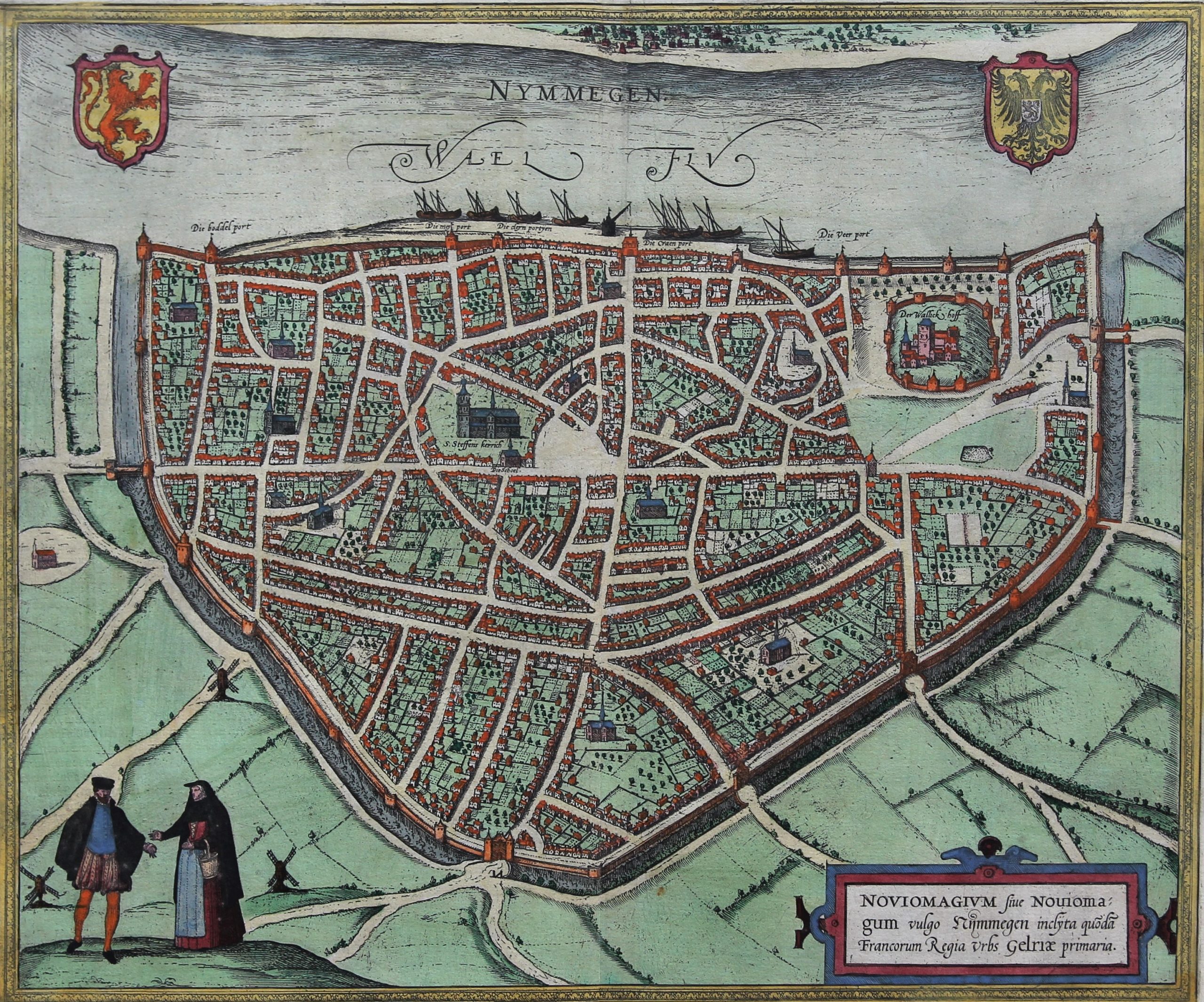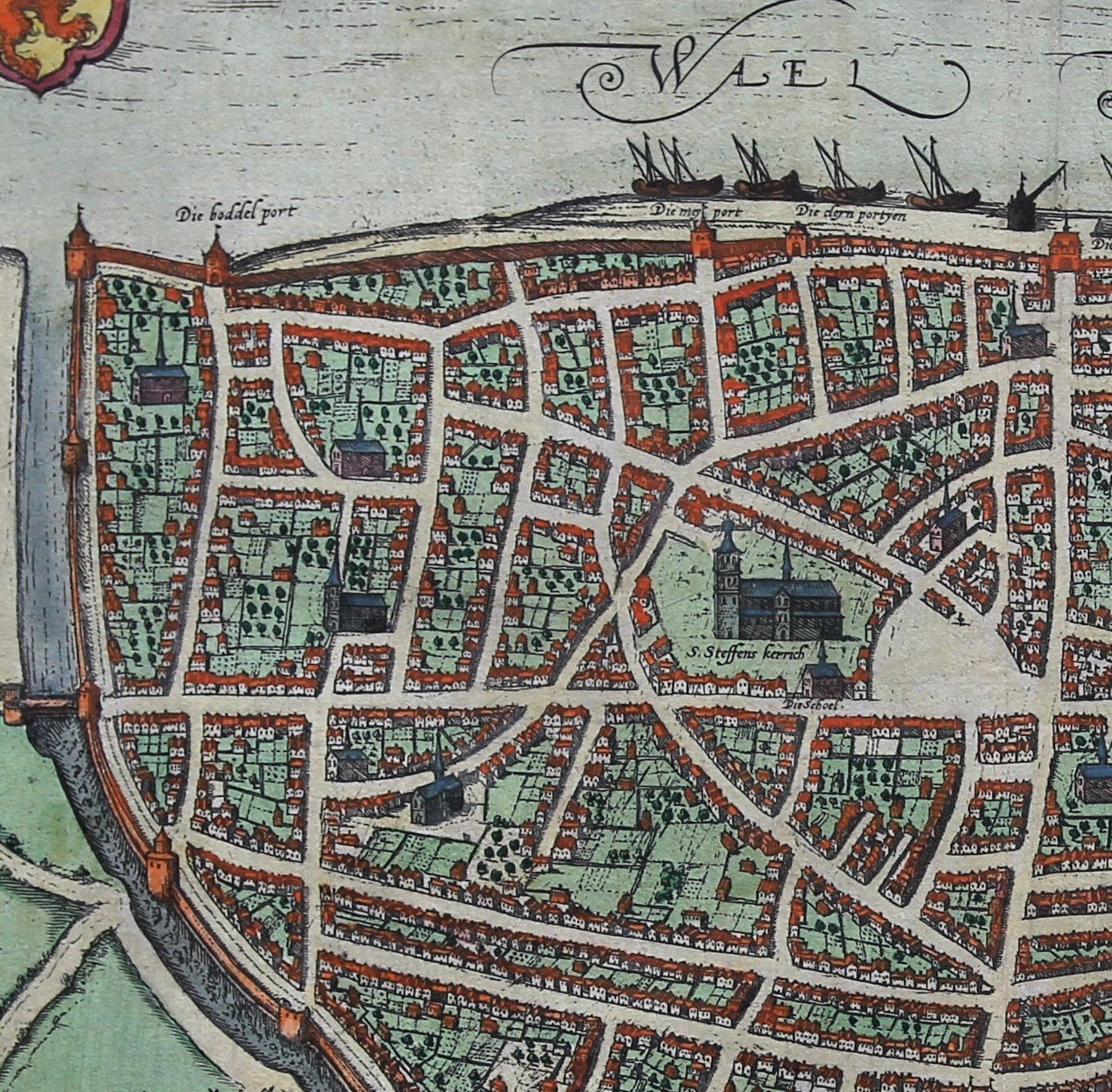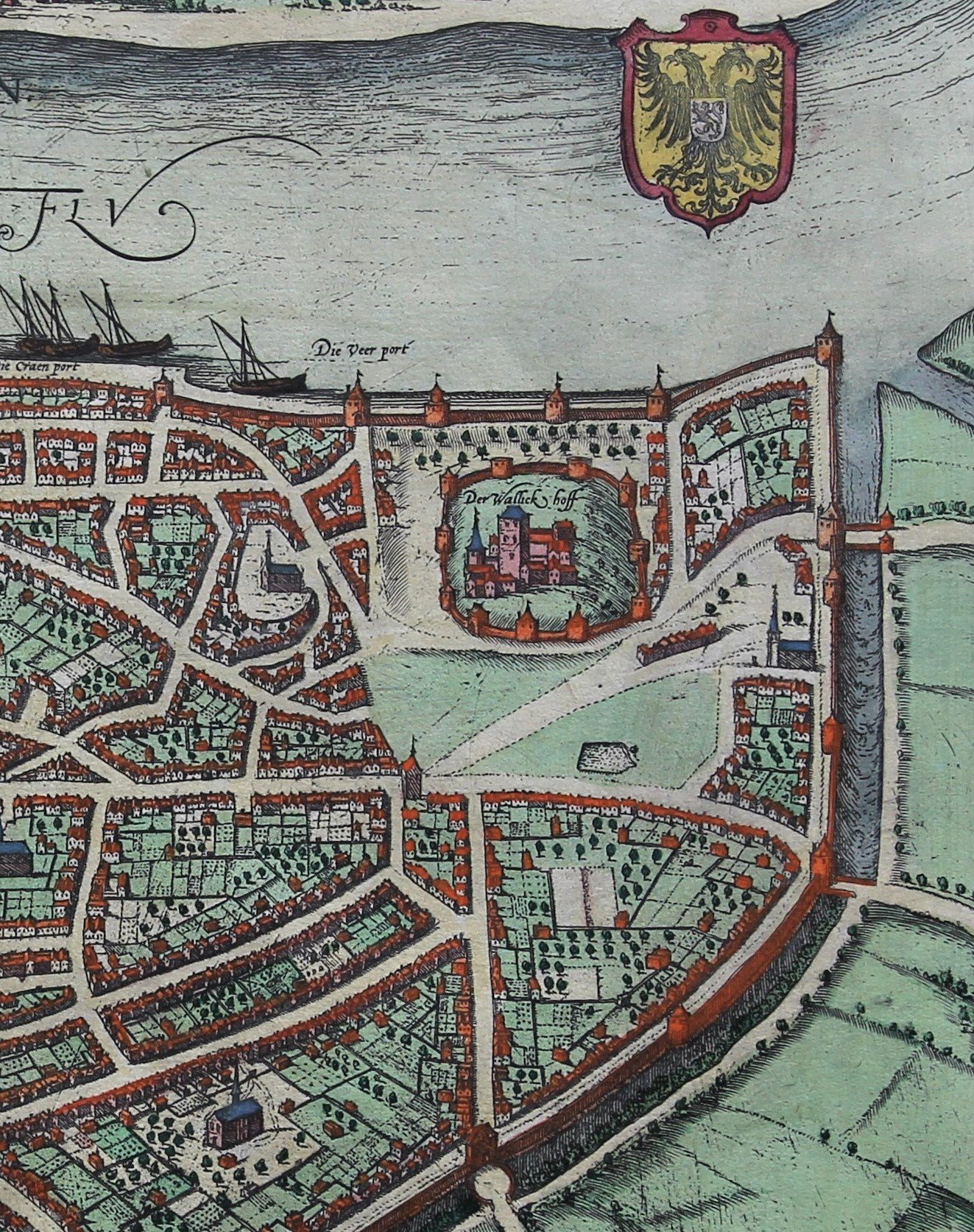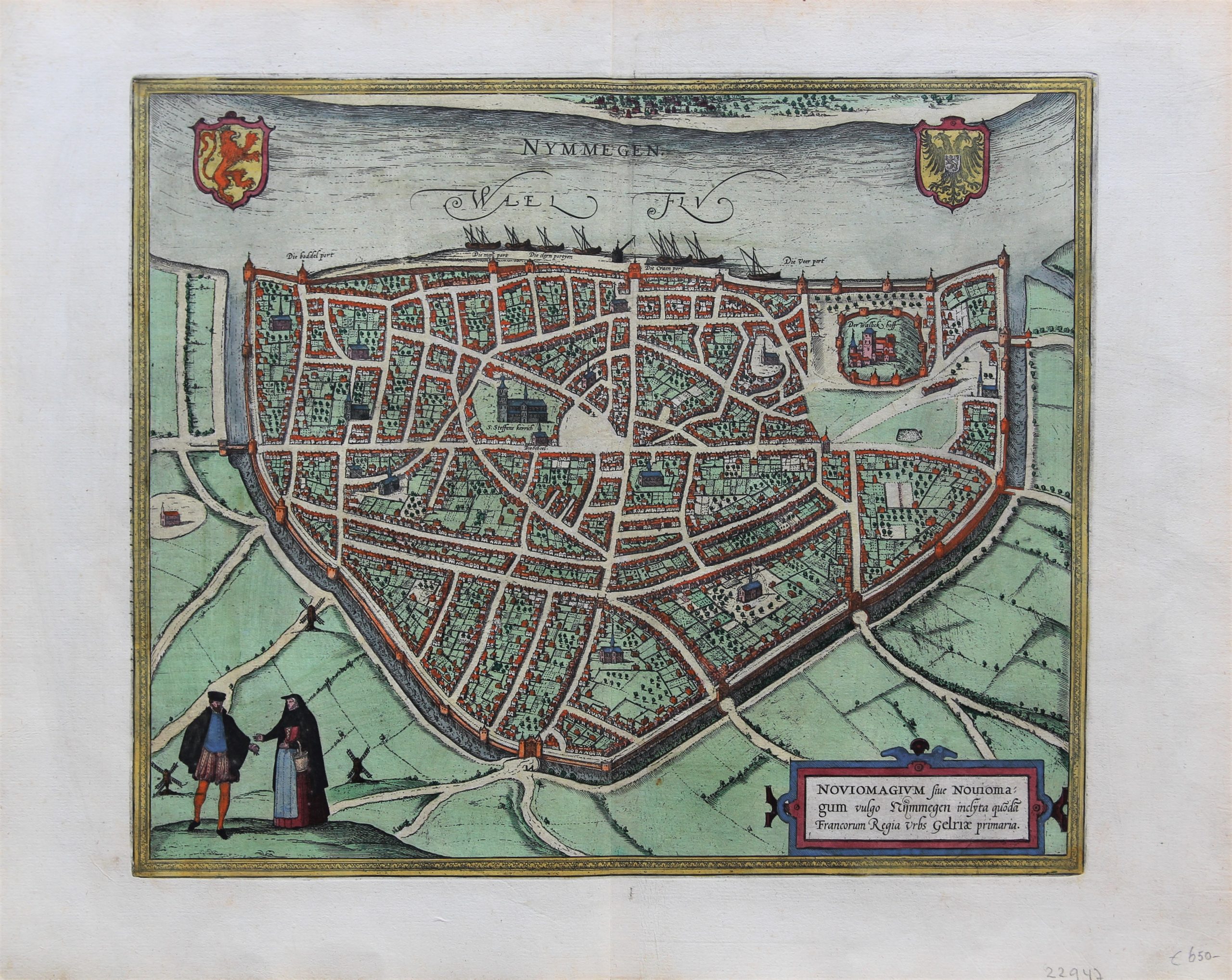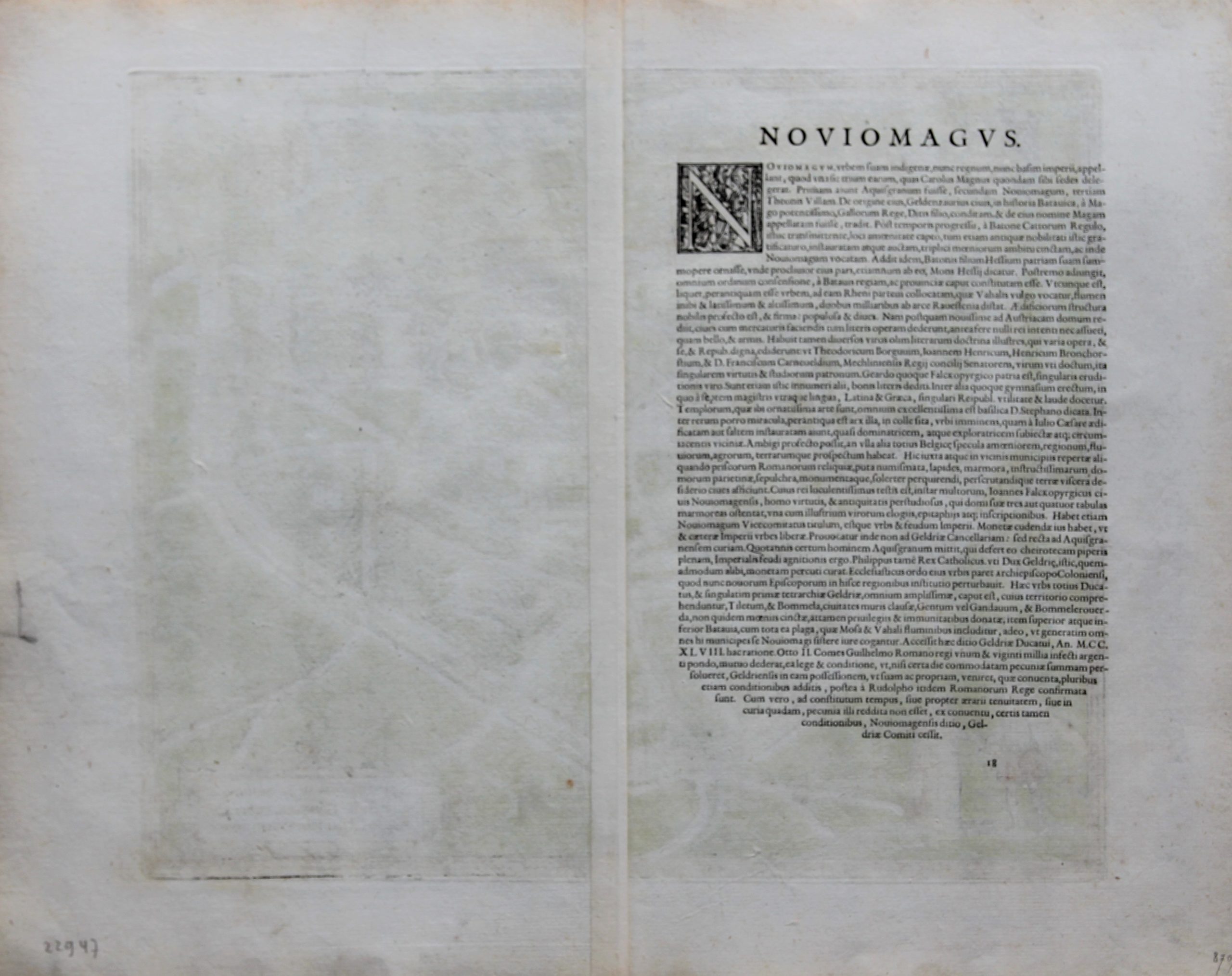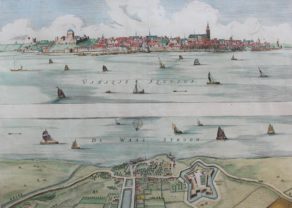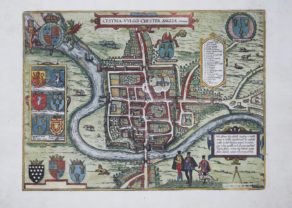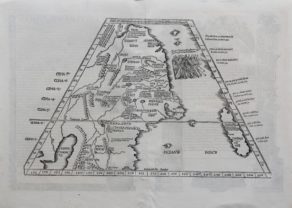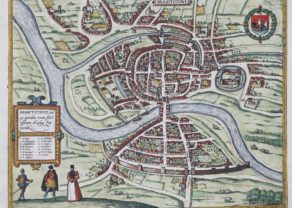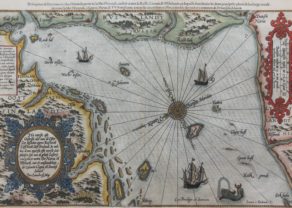Nijmegen
Detail
Date of first edition: 1581
Date of this edition: 1581
Dimensions (not including margins): 33 x 39 cm
Dimensions (including margins): 41 x 51 cm
Condition: excellent. Sharp copper engraving printed on paper. Old coloured. Wide margins.
Condition rating: A+
Verso: text in Latin
Map reference: Van der Krogt 4, 3067; Taschen, Braun and Hogenberg, p 223.
From: Civitates Urbis Terrarum (Urbium Praecipuarum Totius Mundi Liber Tertius). Van der Krogt 42:1-3, page 18.
Nijmegen commented by Braun
“Of all the well-appointed churches, St Stephen’s is the most important.. Other sights include the very old castle on top of the hill near the town: one might ask whether a better viewpoint is to be had anywhere in Belgium from where one can look out over the countryside, rivers, farmlands and fields. A great many ancient objects have been found in this area, left behind by the Romans, e.g. coins, stones, marble, fallen walls, tombs and monuments. As a result, the townsfolk enjoy digging over the ground and avidly searching for such finds.”
Translation of cartouche text: Noviomagium or Noviomagum, commonally known as Nijmegen, was formerly, as a Frankish Palatinate, the capital of Guelders
Taschen on Nijmegen
A bird’s-eye view of the city, where the royal castle of Valkhof can be seen on the right within the city walls. In the city centre is the tall Gothic Sint-Stevenskerk. This imperial and Hanseatic city was going through a troubled phase in Braun and Hogenberg’s time. In 1543 Nijmegen, together with Guelders, became Spanish as a result of the Treaty of Venlo. In 1579 the city joined the United Provinces and was besieged and captured in 1585 by the Spanish in the course of the Dutch Revolt. The Orange party did not suceed in recapturing Nijmegen until 1591.
